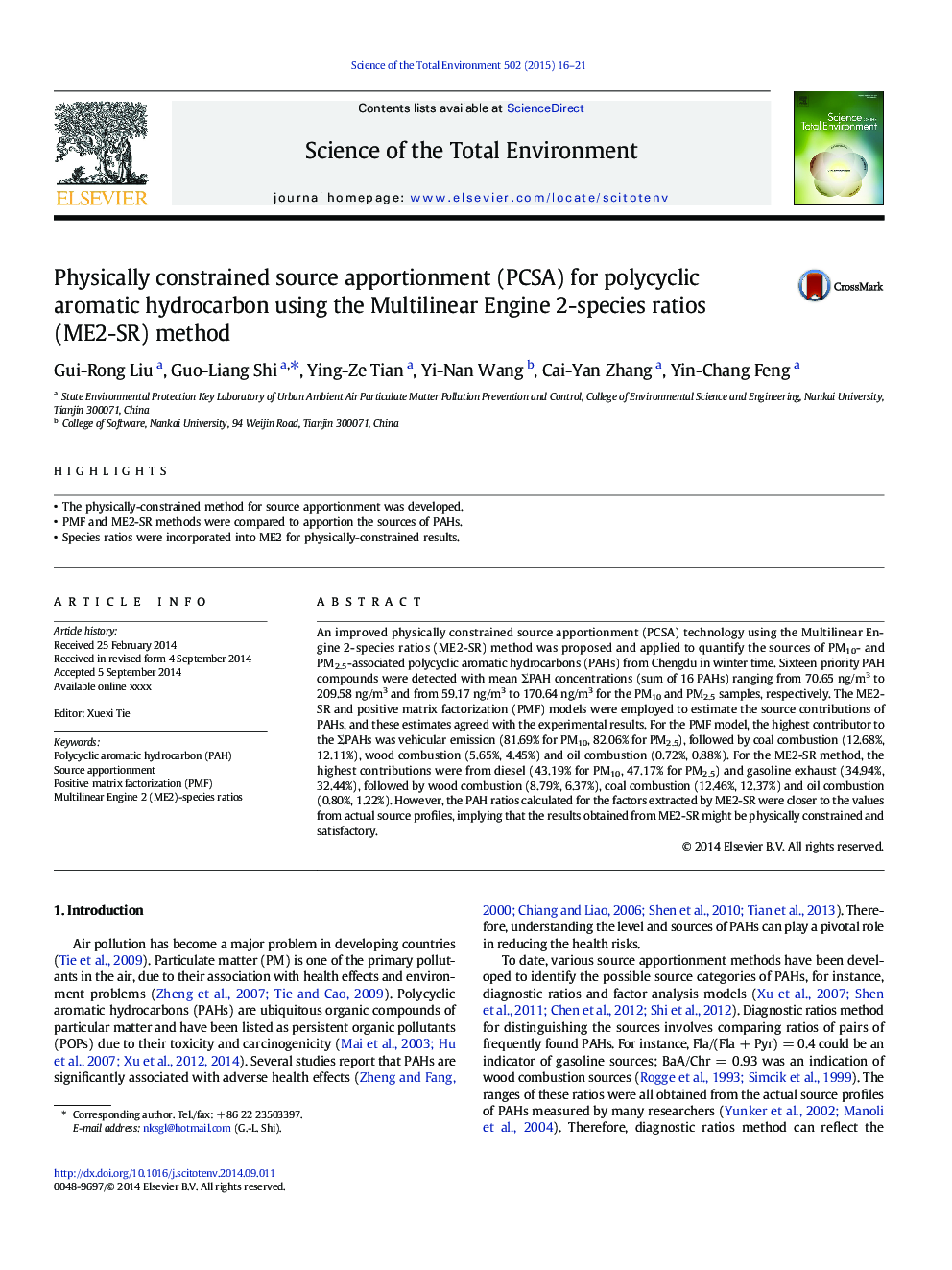| Article ID | Journal | Published Year | Pages | File Type |
|---|---|---|---|---|
| 6328372 | Science of The Total Environment | 2015 | 6 Pages |
Abstract
An improved physically constrained source apportionment (PCSA) technology using the Multilinear Engine 2-species ratios (ME2-SR) method was proposed and applied to quantify the sources of PM10- and PM2.5-associated polycyclic aromatic hydrocarbons (PAHs) from Chengdu in winter time. Sixteen priority PAH compounds were detected with mean ΣPAH concentrations (sum of 16 PAHs) ranging from 70.65 ng/m3 to 209.58 ng/m3 and from 59.17 ng/m3 to 170.64 ng/m3 for the PM10 and PM2.5 samples, respectively. The ME2-SR and positive matrix factorization (PMF) models were employed to estimate the source contributions of PAHs, and these estimates agreed with the experimental results. For the PMF model, the highest contributor to the ΣPAHs was vehicular emission (81.69% for PM10, 82.06% for PM2.5), followed by coal combustion (12.68%, 12.11%), wood combustion (5.65%, 4.45%) and oil combustion (0.72%, 0.88%). For the ME2-SR method, the highest contributions were from diesel (43.19% for PM10, 47.17% for PM2.5) and gasoline exhaust (34.94%, 32.44%), followed by wood combustion (8.79%, 6.37%), coal combustion (12.46%, 12.37%) and oil combustion (0.80%, 1.22%). However, the PAH ratios calculated for the factors extracted by ME2-SR were closer to the values from actual source profiles, implying that the results obtained from ME2-SR might be physically constrained and satisfactory.
Keywords
Related Topics
Life Sciences
Environmental Science
Environmental Chemistry
Authors
Gui-Rong Liu, Guo-Liang Shi, Ying-Ze Tian, Yi-Nan Wang, Cai-Yan Zhang, Yin-Chang Feng,
